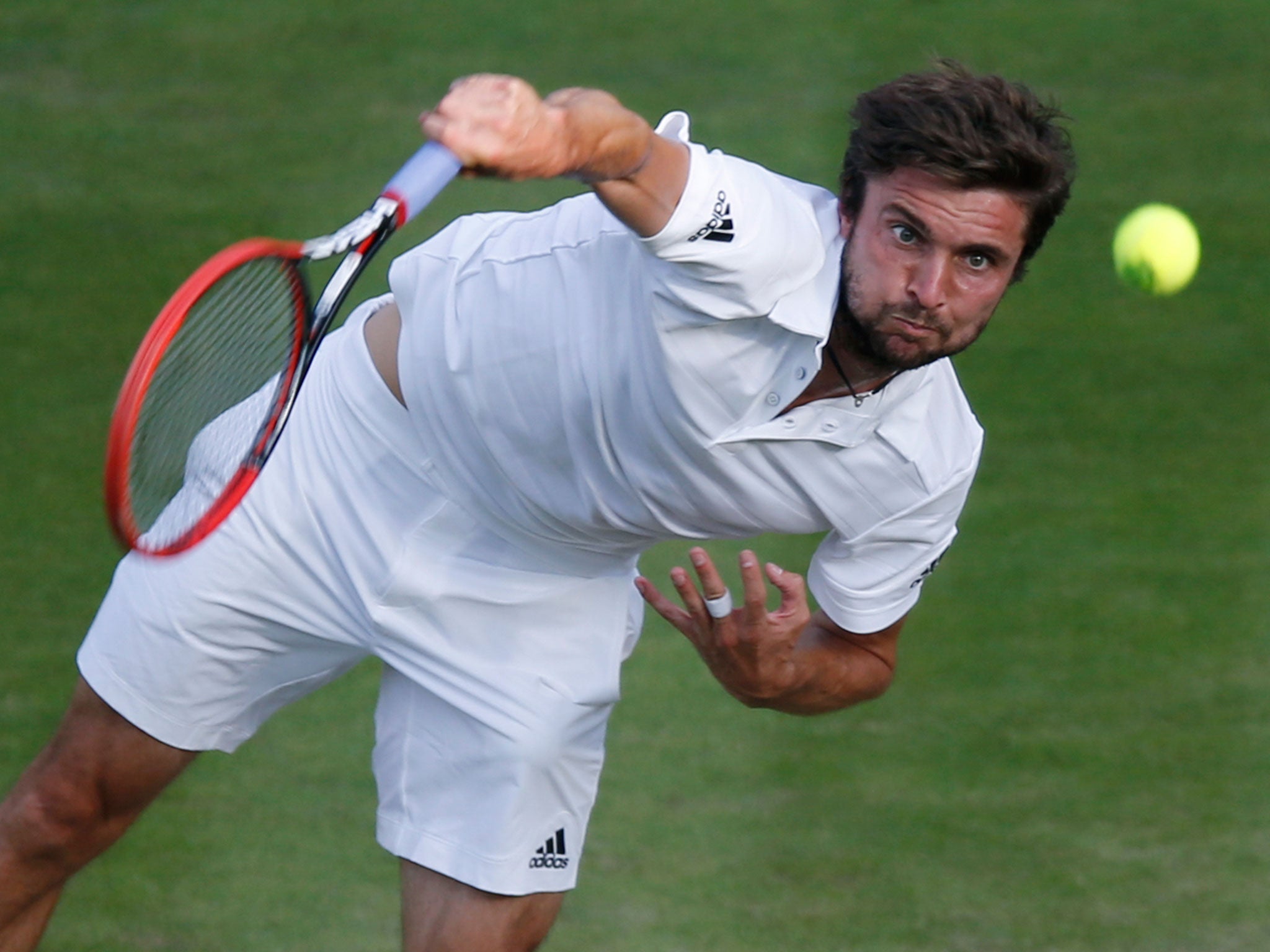Wimbledon 2015: What have we learnt from week one at SW19? Big serves, small-ish players, old-timers
The surprising figure on the women’s list is Petra Kvitova’s tally of 17 aces

Your support helps us to tell the story
From reproductive rights to climate change to Big Tech, The Independent is on the ground when the story is developing. Whether it's investigating the financials of Elon Musk's pro-Trump PAC or producing our latest documentary, 'The A Word', which shines a light on the American women fighting for reproductive rights, we know how important it is to parse out the facts from the messaging.
At such a critical moment in US history, we need reporters on the ground. Your donation allows us to keep sending journalists to speak to both sides of the story.
The Independent is trusted by Americans across the entire political spectrum. And unlike many other quality news outlets, we choose not to lock Americans out of our reporting and analysis with paywalls. We believe quality journalism should be available to everyone, paid for by those who can afford it.
Your support makes all the difference.There has been a surprise or two, but looking beyond that we can begin to see how the next week will pan out, and perhaps beyond that too
1 A big serve is still a huge advantage on grass
The grass may be slower and the bounces less unpredictable, but grass is still a surface on which the big servers thrive, particularly in the men’s game. Where would Ivo Karlovic be without his thunderbolts? The world No 26, who faces Andy Murray today, heads the tournament aces leader board with 136 from his first four matches. Kevin Anderson (third on the list with 79 aces), Marin Cilic (fourth with 78) and Vasek Pospisil (seventh with 67) have also prospered on the slick lawns.
The surprising figure on the women’s list is Petra Kvitova’s tally of 17 aces. In her two-hour match against Jelena Jankovic the defending champion hit just six aces, which was one of the main reasons she lost. Madison Keys tops the women’s aces leader board with 42, ahead of Jankovic, Serena Williams, Kristyna Pliskova and Coco Vandeweghe, all on 28.
2 Don’t judge British tennis on Wimbledon
The public – and many sections of the media – tend to judge the state of British tennis by what happens at Wimbledon. Given that Andy Murray is going strong and Heather Watson and James Ward enjoyed their best Grand Slam tournaments, the consensus would be that things are looking up.
But what if Caroline Garcia had taken one of her match points against Watson in the first round? And what would Ward have achieved had David Ferrer, his scheduled first-round opponent, not pulled out on the eve of the tournament?
Just as it was wrong to pass verdict on the state of British tennis on the basis of a string of first-round defeats, so we should not get carried away by last week’s success. Ward and Watson in particular have made big strides, but now they need to build on that.
3 Size does not always matter
The latter stages of the men’s tournament is feeling like a battle of the giants, but David Goffin and Gilles Simon are proving size isn’t everything. Goffin, 24, is 5ft 11in, weighs less than 11st and still looks like a teenager, but on a weight-to-power ratio few are stronger than the Belgian, who today takes on Stan Wawrinka. Simon is nicknamed Le Poussin (little chicken) for his spindly legs, yet the 30-year-old Frenchman remains one of the sport’s most consistent performers.
The lowest-ranked player left in the men’s tournament is also vertically challenged in comparison with those around him. Denis Kudla, the world No 105, is 5ft 11in. His opponent today, Marin Cilic, is 6ft 6in. The tallest players left in the draw are Karlovic (6ft 11in) and Anderson (6ft 8in).
4 Let’s hear it for the thirtysomethings
Although the likes of Nick Kyrgios, Madison Keys and Belinda Bencic have proved youth can still prosper, tennis at the top level has increasingly become the domain of older players. While the sport has become more physically demanding, advances in nutrition, medical science and training techniques enable players to prolong their careers.
Of the 128 who set out in the men’s singles, 37 were aged 30 or over, which is a Wimbledon record. Four are through to the last 16: Karlovic (36), Roger Federer (33), Wawrinka (30) and Simon (30). Wawrinka is looking to become only the fifth man in the Open era to win two Grand Slam titles after turning 30. There are three thirtysomethings left in the women’s draw in Venus Williams (35), Serena Williams (33) and Jelena Jankovic (30).
5 Leading Swiss players are on a roll
According to modern thinking, the countries producing the next champions are those where hungry players are desperate to escape the hardships of their impoverished homelands. So how to explain the continued success of Swiss players? Federer and Wawrinka, who have dropped just one set between them in the first week, are No 2 and No 4 in the world respectively, while Belinda Bencic and Timea Bacsinszky have been two of the most successful women players this year.
Bencic, 18, is the form player of the grass-court season so far, having reached the final at ’s-Hertogenbosch and won the title at Eastbourne, where she beat Madison Keys, Eugenie Bouchard, Caroline Wozniacki and Agnieszka Radwanska. Bacsinszky, 26, briefly gave up the sport two years ago but made the French Open semi-finals in June and is enjoying her best run at Wimbledon.
Join our commenting forum
Join thought-provoking conversations, follow other Independent readers and see their replies
Comments